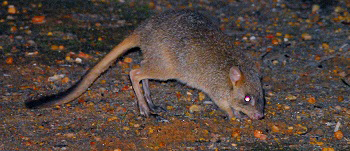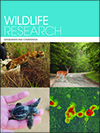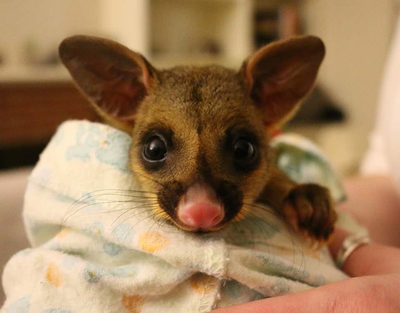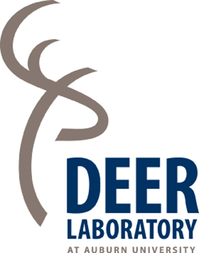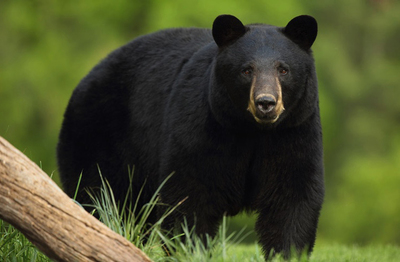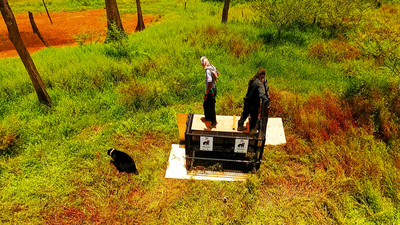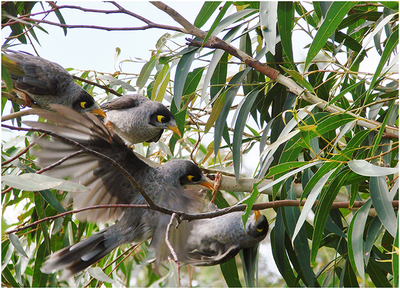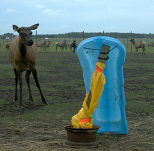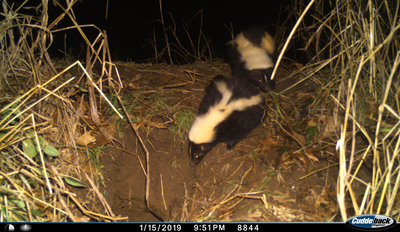Wildlife Research
Volume 50
Number 2 2023
RESEARCH FRONT: Wildlife Translocation
The brush-tailed bettong or woylie is considered ‘Critically Endangered’, despite 50 years of conservation effort. This study follows the establishment, growth and subsequent decline of a translocated population to a fenced sanctuary, but with feral cats being present. Woylies successfully established, overshot their food resources and declined, with predation playing a minor role in limiting growth. Population declines resulting from food shortage induced by irruption and drought are likely to be a common medium-term outcome of unmanaged translocations to predator-free sites. Photograph by Jeff Short.
The success of wildlife rehabilitation programmes is rarely assessed. Our study determines factors affecting survival of juvenile hand-reared common brushtail possums released in the wild. Intrinsic factors (those related to the characteristics of the individuals) were more important in determining success than extrinsic factors (those related to the release environment). Individual personality and human habituation affected survival in the wild. Monitoring of individuals after release in the wild is necessary to assess the success of rehabilitation programmes. Photograph by Callum Gillies.
Throughout much of North America, female white-tailed deer are purchased from captive-breeding facilities and released into private shooting preserves; yet, little is known about the survival or reproductive success of these animals. We found that translocating captive female white-tailed deer is likely to suppress survival and reproductive success, although survival of resulting offspring was comparable to wild deer. Our findings suggest that this practice resulting in increased average antler size within a recipient population is not feasible because of the survival and reproductive success observed in this study. Photograph by Auburn University Deer Lab.
The Illinois Department of Natural Resources was mandated by legislation to develop management plans for American Black Bears. This article examined how Illinois residents’ demographics, emotions, and attitudes were related to support for black bear management strategies (e.g. active reintroduction, natural recolonisation). Both demographic and psychological characteristics were correlated with support for bear management, but these relationships are complex. Photograph by Illinois Department of Natural Resources.
We investigated movement profiles, internal and external factors affecting the adaptability of 13 rescued sun bears released to the wild. Sun bear exhibits two habitat adaptation phases, namely, a random movement phase in the first month of release and a stable movement phase from the second month onward. Habitat use at forest edges adjacent to other favourable habitats may be a more opportunistic survival strategy. This study emphasises the importance of reducing human–bear interaction in rehabilitation centres, and improving the likelihood of bear survival, especially in the early release phase. Photograph by Firdaus Shabbir Ahmad.
Culling of noisy miners is being used as a means of reducing their impact on threatened bird species, but effectiveness has been variable. We anatomically aged and sexed 1856 culled miners to determine the role of demographic structure in noisy miner recolonisation. Recolonisation response differed between regions, associated with variation in population density, landscape connectivity and seasonality, highlighting challenges when implementing culling programs for conservation management. Photograph by Richard Major.
Understanding the influence of population density and competition on animal risk/reward decisions is important for the management of hyperabundant ungulates. Using forage/novel objects to compare behavioural responses I found that elk in a high density enclosure took greater risks, showed more exploratory behaviour, and increased activity compared to low density elk. Because exploratory behaviour is correlated with other personality traits such as aggression, these results show how human-disturbance can select for animal behaviours that directly increase human–wildlife conflict. Photograph by Rob Found.
Winter denning behaviour of striped skunks is highly variable but may influence interspecific interactions at den sites. Our study assessed winter denning behaviour of striped skunks and interspecific den activity in southern Illinois, USA, and found that dens were visited by numerous mammal species and striped skunk denning was influenced by weather and landscape variables. We highlight how this could influence pathogen transmission, especially across an urban–rural gradient. Photograph by Katelyn Amspacher.
